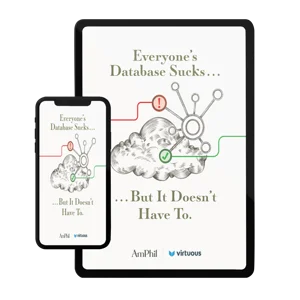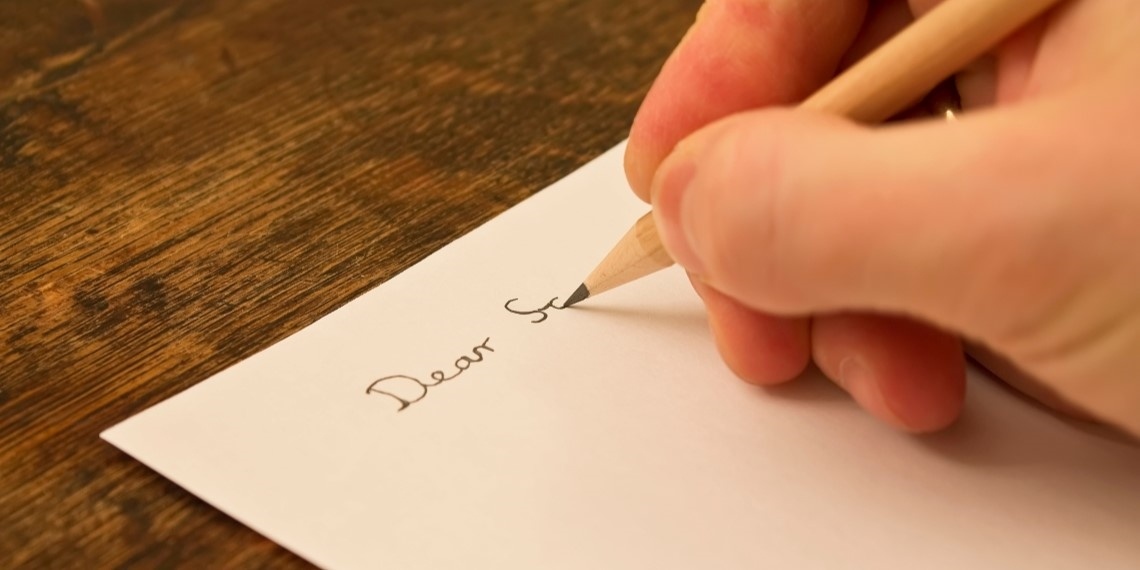
The process of donor stewardship and the journey of falling in love can look a lot alike.
Both have themes that overlap each other. For instance, in dating, we have the courtship stage, where you spend a lot of time getting to know each other. Then, there’s the engage-and-commit stage, where you work hard on strengthening that bond through understanding one another’s needs and wants. And finally, there’s the partnership stage, where you have decided to commit to each other for the long term.
The dynamic between a nonprofit organization and a donor is quite similar—nonprofits spend the majority of time getting to know their donors, learning what drives their generosity, and communicating with them consistently to ensure relationship longevity. However, in the nonprofit sector, we refer to these periods as donor cultivation, donor stewardship, and donor retention. And no matter what stage you’re in, one thing remains true: moving the relationship forward requires a delicate balance of listening, connecting, learning, and suggesting.
But wait, now it sounds like we just threw a bunch of jargon at you. What’s the difference between cultivation, stewardship, and retention, anyway?
Here’s a quick breakdown:
Donor Cultivation:
- At this initial phase, a nonprofit and a potential donor are in the process of getting to know each other.
- The goal is to persuade the potential donor of the organization’s worthiness for their support.
- This is achieved by sending tailored messages to those who’ve shown interest in the cause but haven’t yet donated, using content that resonates with them.
Donor Stewardship:
- While cultivation introduces and persuades, donor stewardship deepens the relationship post-donation.
- Donor stewardship involves segmenting donors based on where they are in their donor journey and communicating the ongoing case for support.
- The emphasis here is on making donors feel valued, ensuring they’re inclined to give again—keeping your organization top of mind.
Donor Retention:
- Donor retention is the art of keeping a donor engaged long-term.
- Regular, impactful interactions are crucial to maintain the connection.
- Beyond the initial gift, it’s about fostering a lasting bond. Through consistent appreciation and relevant communication, the relationship with your donor doesn’t just endure but thrives.
Stewardship aims for the next gift; retention plays the long game. Yet, it’s the steady rhythm of donor stewardship that keeps donors coming back.
Let’s talk about five donor stewardship strategies and how they can help build and retain healthy donor relationships.
1. Donor Stewardship Starts With ‘Thank You’
After a donation, an email receipt is just table stakes. But does your conversation with donors end there? If so, hit the drawing board and start building a donor stewardship strategy. Every donor, whether they chip in a little or a lot, needs more than a digital nod. They need a strategy that echoes gratitude. Without it, they might wonder if their generosity even mattered. And that’s a feeling no donor should ever have.
Prioritize Gift Acknowledgment
Thanking your donors should be a priority for your donor stewardship efforts. In today’s connected world, there is no shortage of charitable organizations to give to. The truth is even if you think your mission is unique, odds are there’s a nonprofit with a similar mission within a 50-mile radius. So, if you don’t take the time to thank your donors, how do you expect to retain them?
Donation acknowledgment isn’t sending one quick thank-you email. Your fundraising efforts should go beyond what a donor expects. Kieran Raval, Managing Director and Chief Solutions Officer of Amphil, emphasizes the need for consistency by recommending, “Thank donors multiple times across multiple channels, especially pick up the phone for lower-level donors.”
“Thank donors multiple times across multiple channels, especially pick up the phone for lower-level donors.”
Kieran Raval, Managing Director and Chief Solutions Officer of Amphil
Donor retention is more than getting a second gift—it’s engaging donors and unlocking their generosity time and time again. But again, if you aren’t properly thanking a donor—why would they want to give to your organization again?
Remember, it’s not just about the major donors. Donor stewardship starts with a personalized, meaningful thank-you to all donors in all giving capacities.
Do you need a better acknowledgment process, but you don’t know where to start? Mike Esposito, CFRE, Director of Growth and Strategy at Hudson Ferris, shares his strategy for ensuring a first-time donor comes back to give again, “Analyze your gift acknowledgment process and ask the following question: ‘Are our gift acknowledgment letters being sent out in a timely manner?’ If an organization forgets to acknowledge a donor or acknowledges their donation at a much later date, it will likely lose the donor.”
Esposito expresses the importance of urgency, “Development staff should be sending gift acknowledgment letters to their donors within 48 hours of receiving a donation.”
“Development staff should be sending gift acknowledgment letters to their donors within 48 hours of receiving a donation.”
Mike Esposito, CFRE, Director of Growth and Strategy at Hudson Ferris
Make Your Donor Stewardship Efforts Easier With Automation
By now, you likely understand how your donor stewardship efforts play a part in your retention strategy and are ready to update your gift acknowledgment process. At the same time, your team is already overwhelmed with its current list of to-dos. ‘
How can you alleviate staff burden but also find more time to commit to thanking your donors?
Take the pressure off your team and implement a solid donor stewardship plan with the right set of automation tools. With Virtuous’ responsive donor database, you can automate customized workflows at scale—including sending personalized and timely thank-you messages—to build donor loyalty and increase your donor retention rate.
Automating online communications in your donor database frees up staff time to perform more meaningful relationship-building tasks like personally calling donors to thank them or writing handwritten thank-you letters.
2. Share the Impact Your Donors Are Making
People donate because your cause strikes a chord. Whether it’s the mission’s pull or a story that hits home, something made them feel and act. They didn’t just give—they connected.
But how can you keep them engaged to continue giving? Sure, donor stewardship is about thanking supporters for their generosity. But after you’ve said “thank you” in a variety of ways, what else can you do to show them they made a difference and build a deeper relationship?
Donors don’t just give—they want to see the ripple. It’s personal. They link their generosity to your mission. So, show them the difference their dollar made.
“Bring donors into the life of the organization by showing how their gift made an impact.” Kieran Raval of Amphil encourages.
“Bring donors into the life of the organization by showing how their gift made an impact.”
Kieran Raval, Managing Director and Chief Solutions Officer of Amphil
Examples of How to Communicate Impact
Your donors deserve to know how they’re serving their community and why their donation matters. Giving them measurable impact allows them to understand how they’re affecting change and provides them with an incentive to continue giving to your organization.
“Let your donors know why their gift matters and the impact they are having on your programs. Reporting back should be done consistently and regularly,” Jocelyn Kwok, Principal Consultant of Iskwok Consulting, emphasizes.
“Let your donors know why their gift matters and the impact they are having on your programs. Reporting back should be done consistently and regularly.”
Jocelyn Kwok, Principal Consultant of Jskwok Consulting
Once a donor understands what kind of impact their donation has on your organization, they’ll be more inclined to return and increase their donation frequency—maybe even sign up for your monthly program. It all depends on how you’re communicating that impact and if you’re doing it in a meaningful way that inspires action and leads to loyal donors.
Ready to communicate impact to your donors to build a deeper relationship? Here are some ideas to consider.
Highlight in Your Newsletter
If you’re already sending out donor communications via a monthly newsletter, designate a section to highlight impact metrics about your fundraising campaign. Get engaging elements in there like a fundraising thermometer so donors can visualize how much they were able to raise collectively as a community.
While it’s vital to share the total amount raised by donors, it’s equally important to show its tangible impact. For instance, if your mission is to protect endangered elephants in Asia and you’ve raised $100,000, don’t just state the amount. Instead, convey the real-world difference: "Together, the generosity of our donors helped us rebuild 25 habitats across six countries in Asia. Now, 110 elephants have a safe place to live and thrive.”
Make it fun! You can even gamify the experience by including something like “Top Fundraisers” if you recently launched a peer-to-peer fundraising campaign.
Social Media Shoutouts
After your fundraising campaign closes out, do a social media roundup! It can be as simple as thanking donors collectively for their generosity and following it with what your organization is now able to do with those extra funds (e.g., bring clean water to 10 more communities or purchase school supplies for 500 kids).
You can even do individual shoutouts on your social media channels—with their permission, of course. If you do decide to go this route, make sure all the information you decide to include has been approved by the donor. Sometimes, people like to give anonymously and prefer not to have that information public. Other times, donors enjoy the extra recognition.
One-On-One Phone Calls
Get personal with donors with a traditional phone call. They’ll appreciate the thoughtfulness of taking time out of your day to reach out to them individually.
Take advantage of the one-on-one time to get to know them more. Ask them how they’re doing, and then thank them for their recent gift. Don’t forget to share some impact metrics so they have an idea of how their contribution made a difference in someone’s life.
If you’re not able to reach them, don’t just hang up. Leave a voicemail briefly explaining why you’re calling and invite the donor to give you a callback.
3. Use Segmentation to Improve Donor Stewardship
Your donor stewardship strategy should include donor segmentation. Don’t make the mistake of sending one mass email to all of your donors. These types of messages often lack engagement since they address a broad audience. By segmenting donors based on their behavior and preferences, you can tailor and personalize your messages for greater impact.
There are infinite ways to create donor segments for your acknowledgment emails. For example, you can segment by campaign, by type of donor, by demographics, by the type of content they engage with—the list goes on.
Ben Domingue Director at Amphil offers practical advice for using segmentation to retain donors, “Segment where you are losing the most amount of donors. Are they major donors? Are they mid-level donors? Understand where they’re being lost, then devise a strategy to engage that segment. It could be visits to major donors, phone calls to mid-tiers, or a mailing reminding donors they need to re-activate their gift. Many times, donors just forget.”
“Segment where you are losing the most amount of donors.”
Ben Domingue, Director at Amphil
Using marketing automation tools like Virtuous—nonprofits can segment donors, create specific recipient lists, and automate email schedules based on donor actions. For example, if a one-time donor responds to monthly giving appeals and becomes a recurring donor, the system automatically shifts them to the monthly donor list. This ensures they receive personalized communications specifically designed for monthly donors, all without your team lifting a finger.

When you build these automated emails, just be sure to add personal information so the email doesn’t sound generic. Incorporate details like the recipient’s first name, donation amount, and campaign name using merge tags. This helps prevent the email from feeling like a generic message sent to everyone.
Another tip: Use a plain-text email instead of an HTML-coded one and have it signed by a member of your team. This personal touch helps donors feel appreciated and gives them a genuine person to connect with. Remember, people give to people—not marketing machines.
4. Build a Community of Long-Term Supporters
Community is an essential part of a thriving nonprofit. The organizations that are maintaining a high average donor retention rate are the ones that have fostered meaningful connections among supporters—thanks to an effective donor stewardship plan.
If you have donors, you’re already ahead of the curve. The foundation of any community is having like-minded individuals come together in support of something they care about. In this case, it’s your mission! So, how can you move the needle on this?
“One great strategy is to launch a donor club. This gives you the benefit of reminding donors their membership is an annual one and to activate now with a gift,” Domingue suggests.
“One great strategy is to launch a donor club. This gives you the benefit of reminding donors their membership is an annual one and to activate now with a gift.”
Ben Domingue, Director at Amphil
The membership element adds exclusivity to the group—plus, since they have to donate a certain amount to become a member, you’re retaining that donor for at least a year. Be sure to keep in consistent communication with these members and offer “perks” for being a member. This could be some kind of gift (like swag) or an in-person gathering to thank them for being loyal supporters.
Putting in the extra effort will keep them engaged throughout the year. They might even make additional donations along the way, which will add to their lifetime value.
Membership offers an exclusive feel to a group. By setting a specific donation amount to join, you ensure donor commitment for at least a year. Regularly communicate with these members and provide member-only benefits, such as gifts (like swag) or special events.
Putting in the extra effort will keep them engaged throughout the year. They might even make additional donations along the way, increasing their lifetime value to your shared cause.
Find Opportunities to Connect In Person
Perhaps the most effective way to build long-term relationships with donors and promote a sense of community is by organizing face-to-face donor appreciation and fundraising events.
Kwok encourages you to get creative, “Engage donors with your organization. Are there opportunities for donors to get an inside look at your program or to meet some of the beneficiaries?”
“Engage donors with your organization. Are there opportunities for donors to get an inside look at your program or to meet some of the beneficiaries?”
Jocelyn Kwok, Principal Consultant of Jskwok Consulting
5. Learn From Your Data and Improve Donor Stewardship
Your donor stewardship plans should reflect what information you have in your database. The data that you have in your CRM tells you everything you need to know about how your donors want to be engaged and what type of content they’re interested in receiving.
It all starts with having an efficient CRM system that can help you unlock these learnings. With Virtuous’ donor management software, nonprofits no longer have disparate data across different platforms. It allows you to house all of your donor data in one easy-to-digest and customizable dashboard.
As a best practice, Esposito urges you to track stewardship touch points in your CRM and incorporate automation and AI in your processes to increase efficiency.

So, how can you use your data to inform your donor stewardship plan? Here are four steps to consider, according to Diana Hoyt, Chief Strategist and Trainer of Formula for Fundraising:
- 1. Run specific donor analytics to understand where the issues are.
- 2. Attach donors to the numbers.
- 3. Create fundraising strategies based on those two pieces of information.
- 4. Use the strategies to develop the fundraising plan.
Good Donor Stewardship Leads to Retention
By now, you understand the important role of stewardship in donor retention. Ultimately, if you want to retain donors and get those recurring gifts, it all starts with having an all-encompassing donor stewardship plan. That means you’re building an inclusive acknowledgment process so every donor understands how much you appreciate their support.
But it also means you’re optimizing, personalizing, and scaling your process to include data learnings, automation, and segmentation. Donors shouldn’t feel like they’re just part of a crowd—they should feel individually addressed.
Ready to take your donor stewardship plan to the next level?
Remember, each donor’s contribution is personal. They deserve a unique journey based on their interactions and passions for your cause. Dive into our Donor Journey e-book to learn how to nurture these relationships effectively.


